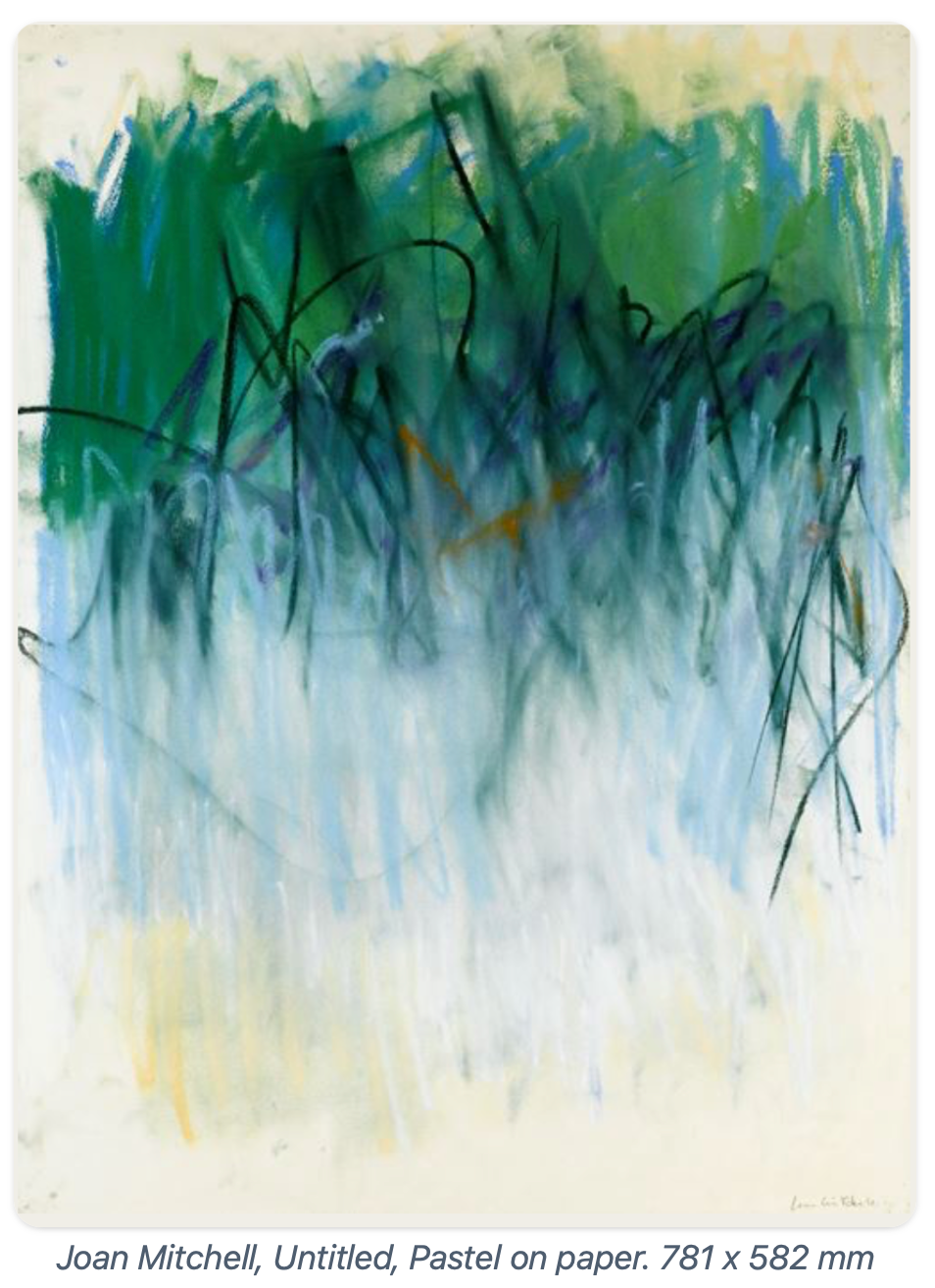When I think about intuition in painting, the words that come to mind are freedom, movement, and expression. As such, I thought it would be interesting to cover ‘Action Painters’. These are distinguished by their process of using movement, utilising gravity and physical action to create paintings.
Jackson Pollock was noted for his drip technique, splashing, flinging, pouring and splattering canvases with flicks of paint, to build a tapestry of intuitive marks. Jackson expressed free-form association, believing art exists in the subconscious, resulting in huge canvases with intricate layered details.

Joan Mitchell produced a series of impressive oil paintings, pastels and prints between the 1950s and 1980s. She is distinguished by gestural mark-making and was fascinated by landscapes, referencing feelings and memories of a place. What I love about her paintings is the contrast between soft-coloured layers and the foreground of expressive marks.

Katharina Grosse is a contemporary artist who takes her action painting beyond the canvas, into installation art that sweeps across a gallery space. By using textiles draped she creates a 360-degree space that feels like a painting has enveloped it. She uses huge strokes of colour, like a sprawling kaleidoscope.

Action painters use the act of painting to record personal, intuitive and subconscious events as if they are acting them out on the canvas. The method of art making in the physical action is being recorded as a moment in time.
